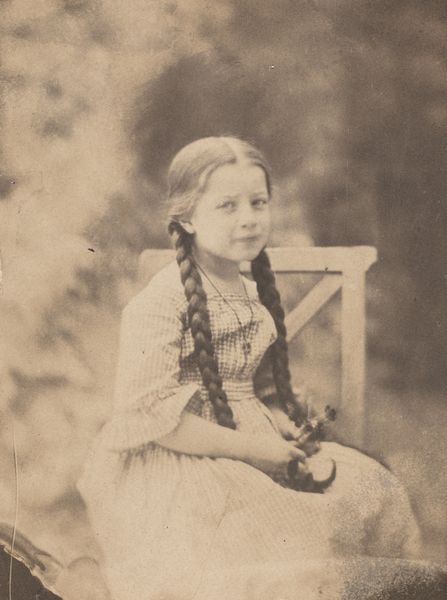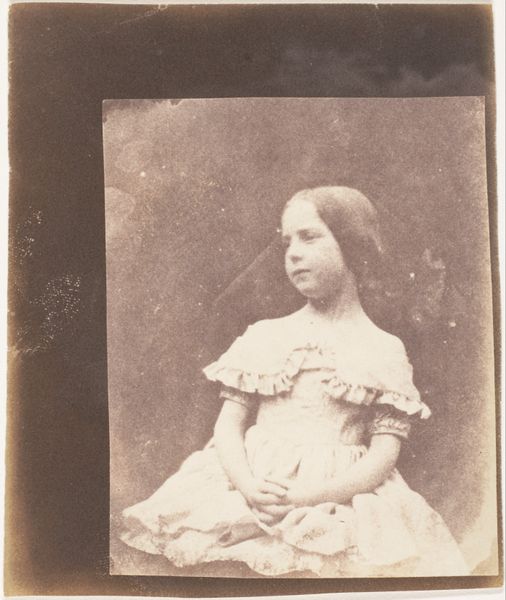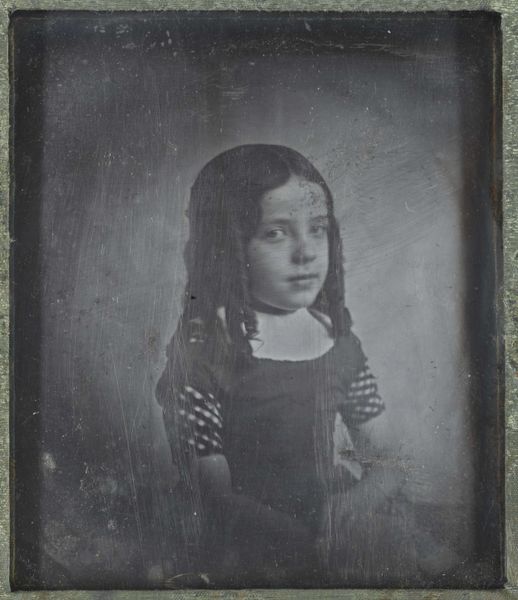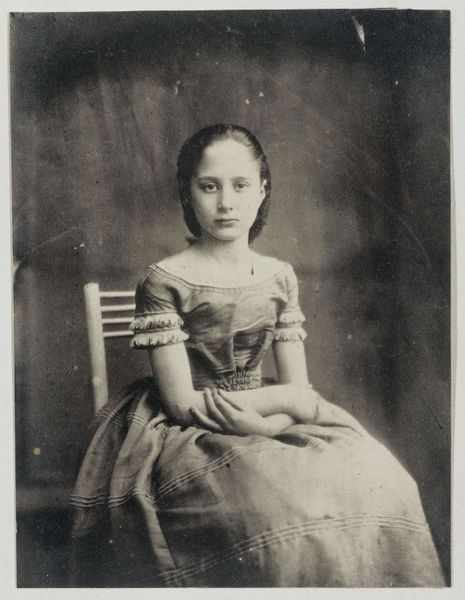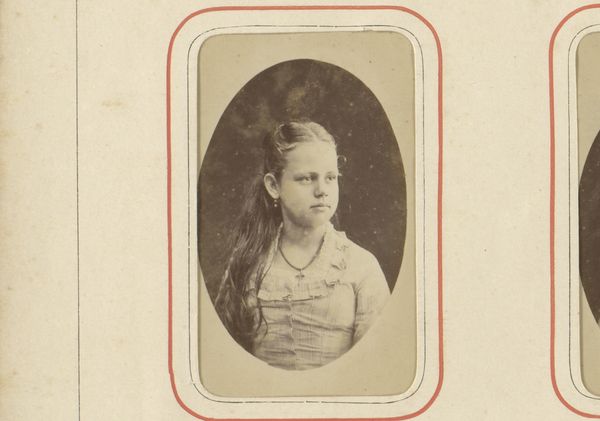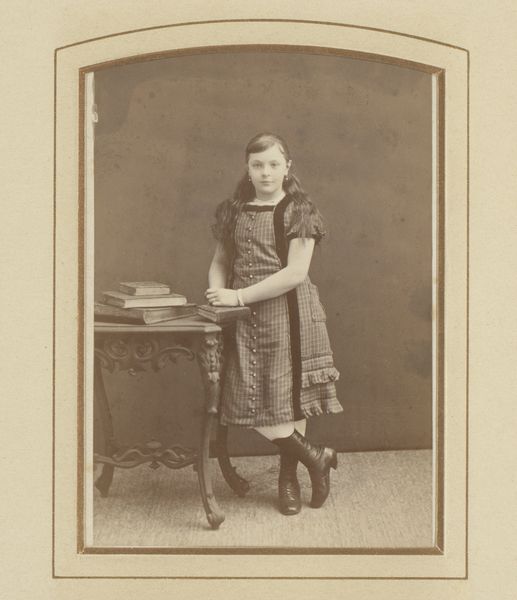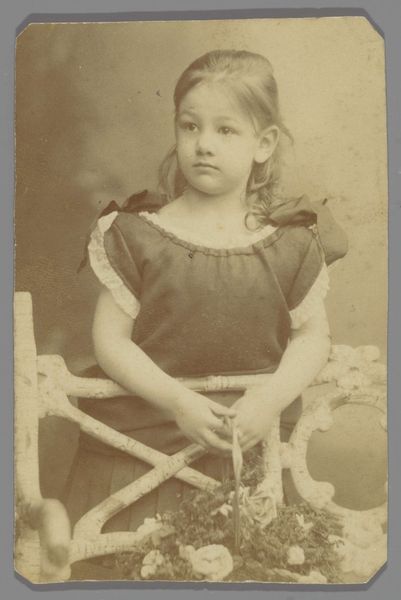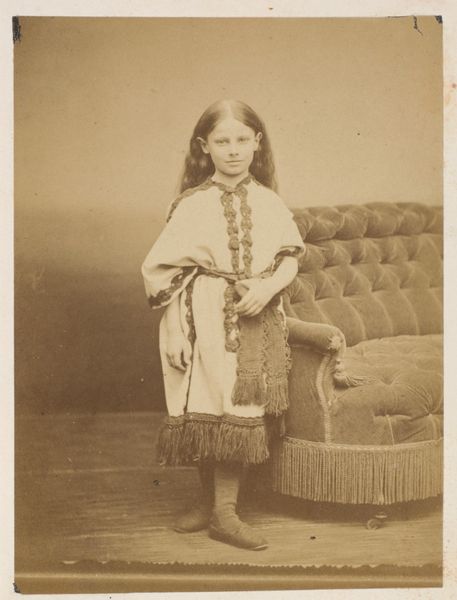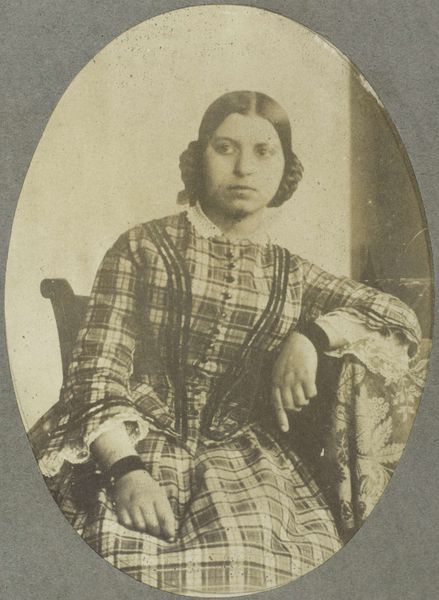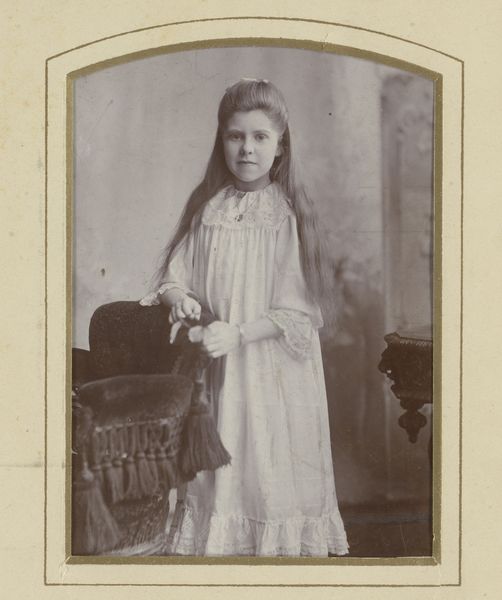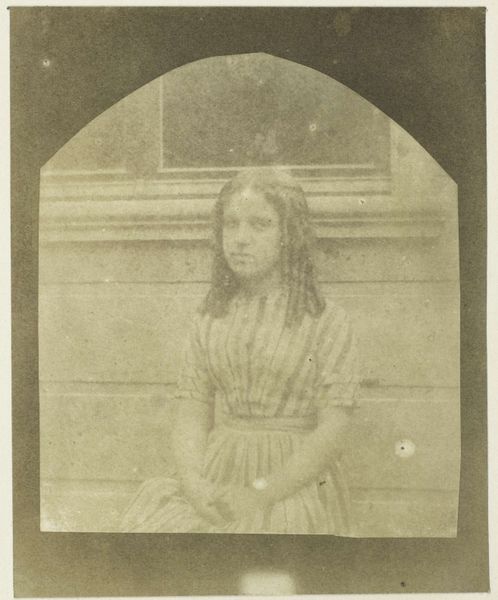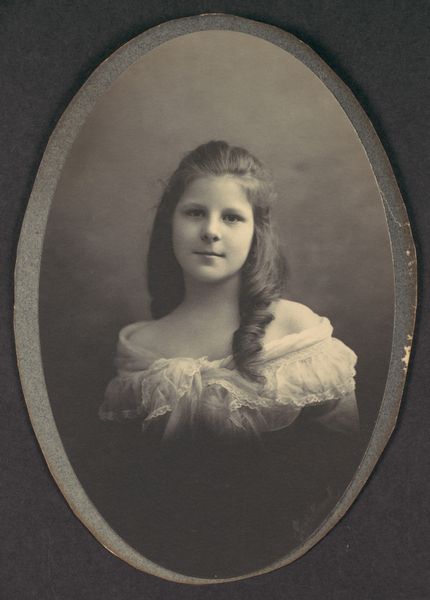
photography, gelatin-silver-print
#
portrait
#
photography
#
gelatin-silver-print
#
19th century
Dimensions: image: 15 x 9.7 cm (5 7/8 x 3 13/16 in.)
Copyright: National Gallery of Art: CC0 1.0
Curator: Marie LaPorte, a gelatin silver print created around the mid-1850s. Looking at the subject, what strikes you initially? Editor: An immediate sense of faded innocence, almost ghost-like. The tonal range creates this overwhelming wistful feeling, like a memory barely held. It's soft, yet somehow a bit unsettling. Curator: Yes, and the softness certainly results from the medium. Think of the challenges inherent in photography from this period, particularly the constraints around capturing movement or gesture. We might say the photograph achieves a sense of tranquility precisely because of its technical limits. Note how the composition, quite centered and balanced, mirrors this stasis. Editor: But that stasis doesn’t sit easily with me. Considering the limited agency afforded to young women in that period, the composed posture, the neat braids—I wonder about the performative aspect. This isn't just a photograph, it's a construction reflecting societal expectations placed upon young girls, a rigid, almost doll-like image they were expected to embody. Curator: An astute observation. Looking at the lines—the verticality of her form countered by the horizontality of her braids—one also finds echoes of Neoclassical portraiture of the time. Restrained, balanced, evoking idealized virtue. The materiality here, gelatin silver, enhances the grayscale, eliminating any distractions. The image becomes purely about form and light. Editor: But can we truly extract it from its sociopolitical moment? Early photography was largely a tool for documenting social types, power dynamics were so deeply ingrained. I look at her clothes, that somewhat simple checkered dress, and consider what socioeconomic stories are woven in too, what it communicates or perhaps, conceals, about Marie's place within the 19th-century social hierarchy. Curator: Context is useful, I agree. However, I still find great importance in simply deconstructing what's before us: the formal harmony of the image, the artist's adept handling of chiaroscuro despite primitive equipment. It transcends being solely a record, becoming a commentary on visual aesthetics themselves. Editor: Perhaps. For me, the beauty lies precisely in its capacity to simultaneously reveal and conceal the layered realities of Marie's life, its historical echoes. To reduce this potent image simply to lines or light, I think, would rob it of its historical weight. Curator: Fair enough, though the beauty, to my eye, inheres precisely in those formal choices and aesthetic properties which elevates the work from documentation to art. Editor: I guess, ultimately, the tension between documentation and aesthetics creates an enduring dialogue. The artwork compels us both, if from slightly different angles.
Comments
No comments
Be the first to comment and join the conversation on the ultimate creative platform.
